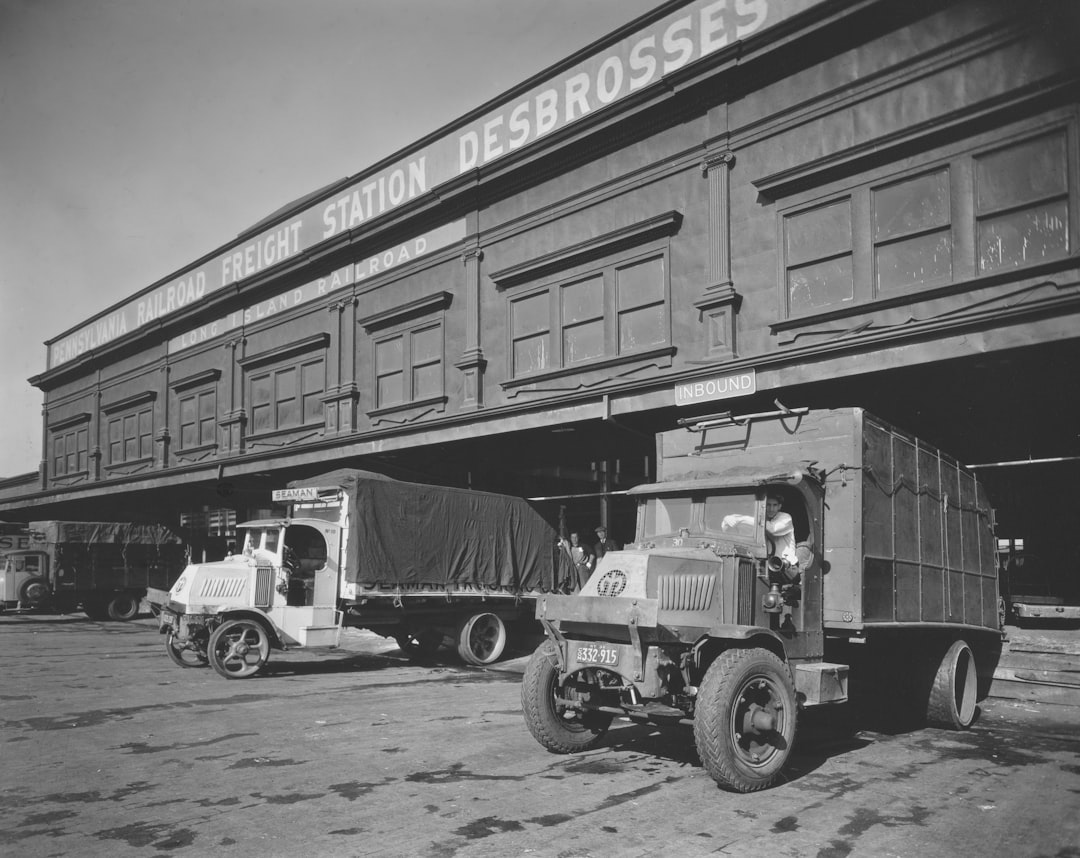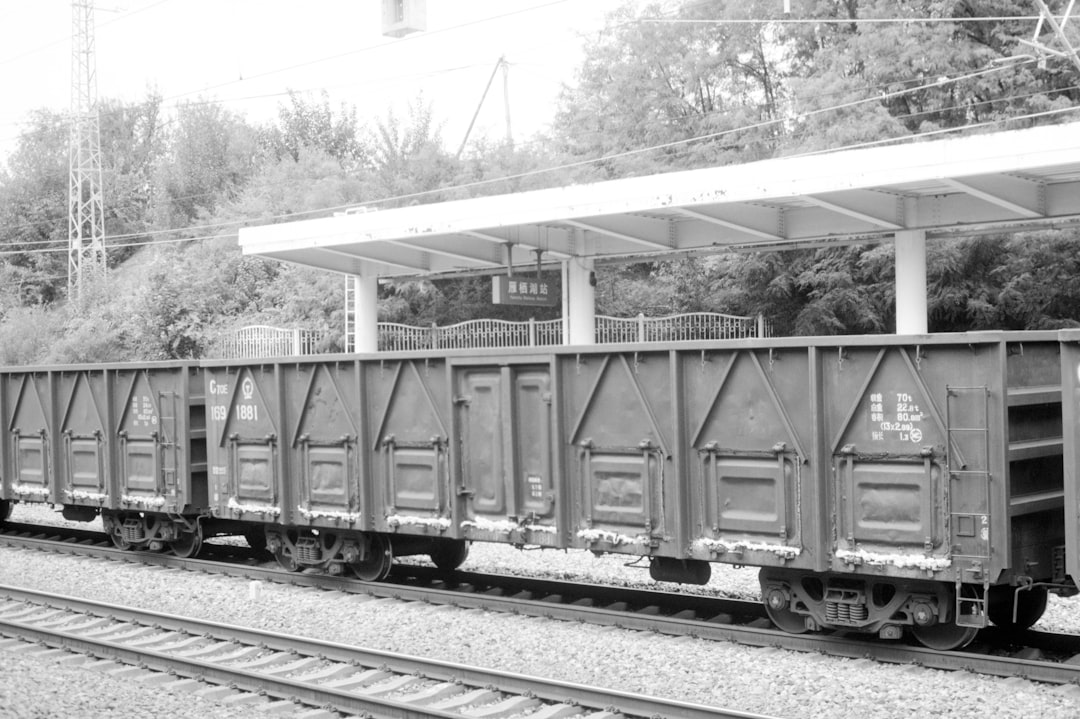

Engage prospects with a scan and streamline customer engagement with FREE QR code marketing tools by Sona – no strings attached!
Create a Free QR CodeFree consultation

No commitment

Engage prospects with a scan and streamline customer engagement with FREE QR code marketing tools by Sona – no strings attached!
Create a Free QR CodeFree consultation

No commitment
In today’s digitally driven world, QR codes are redefining how railroad car manufacturers connect every physical touchpoint with measurable digital outcomes. As operational complexity, sustainability expectations, and regulatory scrutiny rise, companies feel the pressure of incomplete tracking, manual paperwork, and disjointed information silos that cost both time and opportunity.
Traditional analog workflows such as paper maintenance logs, static asset tags, and fragmented documentation leave many manufacturers missing crucial data, leading to blind spots in asset management and customer engagement. This lack of real-time insight often results in high-value opportunities being overlooked, whether it is an unidentified prospect, an untracked compliance issue, or a missed maintenance interval.
By integrating QR codes into production lines, logistics, and customer engagement strategies, railroad car manufacturers can bridge these gaps, delivering instant access to information, enabling real-time updates, and converting every scan into actionable intelligence. The result is faster decision-making, cost savings, and the ability to turn every railcar interaction, whether internal or external, into a step forward on the path to digital excellence.

Railroad car manufacturers often wrestle with fragmented data and paper-driven processes, resulting in errors, delays, and missed high-value prospects. QR codes create a seamless bridge between the physical and digital, enabling instant access to vital data and improving accuracy across every manufacturing stage. From shop-floor instructions and torque settings to compliance attestations and customer service portals, QR codes transform static surfaces into smart entry points for action and analytics.
To replace recurring frustrations like incomplete or outdated asset records and manual inspection workflows, start by mapping where information is created, updated, and consumed. Identify the bottlenecks that introduce latency or human error. Then assign QR codes that make it effortless for the right person to pull up, submit, or confirm information at the exact moment it is needed.
Replacing outdated paperwork with QR-enabled workflows reduces bottlenecks and surfaces previously anonymous interactions. Every scan becomes a captured signal that can generate a task, create a support ticket, or notify an account owner. In aggregate, these signals reveal where to focus improvements, which prospects show commercial intent, and which assets demand intervention to maintain uptime and safety.

Persistent industry challenges such as invisible supply chain gaps, difficulty tracking compliance or maintenance events, and poor follow-up on unstated customer needs can be traced to a lack of real-time, actionable data. QR codes provide a pivotal solution by converting each physical asset, document, or package into a smart digital endpoint. This is particularly impactful in rail manufacturing where fleets encompass thousands of parts per railcar, inspection cadences span years, and stakeholders range from operators and lessors to regulators and component OEMs, as seen in public transit.
When every inspection tag, shipment label, or brochure can trigger a digital action, workflows finally move at the speed of the shop floor. Teams that once relied on manual handoffs and memory gain automated guardrails that help them do the right task at the right time, with a verifiable audit trail that simplifies reporting and due diligence.
With QR codes, manufacturers gain control over a previously unpredictable world. They brighten blind spots, improve accountability, and ensure that every interaction leaves a digital trail that can be acted upon. This lowers operational risk while unlocking measurable outcomes such as faster turnarounds, higher first-time fix rates, and more complete sales attribution.

Fragmented communications, slow customer support, and inconsistent documentation often stem from a lack of accessible, targeted information. Railroad car manufacturers can address these challenges through well-chosen QR formats that map to common tasks across engineering, production, logistics, and customer success. Selecting the right format and destination is the difference between a scan that delights and a scan that frustrates.
Dynamic QR codes are especially valuable in this vertical because assets have long service lives and content must evolve over time. When codes are dynamic, you can update links after labels are permanently affixed to components or car bodies, maintain a clean analytics trail, and support A/B testing of calls to action without reprinting.
With a platform like Sona QR, manufacturers can generate these formats in one place, apply consistent branding, and route scans conditionally based on device, language, or location. This creates clean user experiences that respect context and minimize friction.

Untracked assets, inconsistent engagement points, and lost leads represent common growth barriers for railcar manufacturers. QR codes illuminate these blind spots by embedding digital access at every physical interface. The key is to place codes where they solve a real job to be done, not where they look clever. When the value proposition is clear and immediate, adoption follows naturally.
Start with touchpoints that are frequent, high stakes, or costly when errors occur. Then expand into customer-facing surfaces that convert offline curiosity into qualified demand. Over time, your QR footprint becomes a network of smart endpoints capturing intent and activity from the factory floor to the operator’s yard.
Deploying QR codes at these strategic touchpoints strengthens engagement, enhances operational insight, and reveals new channels for account growth and stakeholder satisfaction. The goal is not to flood every surface with codes, but to place the right code in the right place with the right purpose.

Operating in silos or dealing with incomplete data can lead to missed upsell, cross-sell, or compliance opportunities. QR codes can be put to work in ways that address these recurring challenges while respecting the realities of rail operations and procurement cycles. Prioritize use cases that remove friction for the user and produce measurable improvements you can share with leadership.
Bringing these interactions online with QR codes ensures that operational accuracy, engagement, and compliance are not left to chance, but driven by real-time data and timely follow-up. Over months, analytics will reveal which codes move the needle, allowing you to double down on high-impact placements and retire low performers.
One often overlooked pain point in railroad car manufacturing is the inability to identify and pursue high-value prospects who never submit forms or publicly express interest. QR codes unlock these insights by providing granular audience segmentation based on real-world behaviors. When you place unique codes on sales literature, event signage, and demo units, every scan tells you something about the person and the moment that motivated them.
Segment by intent, role, and context to ensure that follow-up aligns with what the scanner actually needs. Then sync these segments into your CRM and advertising tools so marketing and sales can act quickly, without manual spreadsheet wrangling. For paid media, see Sona’s intent-driven retargeting.
This transformation replaces lost opportunities and anonymous interactions with actionable intelligence. Manufacturers can target, qualify, and convert more accounts based on real-world behavior, building pipelines that reflect true interest rather than assumptions gleaned from web analytics alone.
Railroad car manufacturers frequently struggle with fragmented marketing attribution and disjointed customer journeys across physical and digital channels. QR codes unify these efforts by making every brochure, sign, and product plate both actionable and measurable. This is core to Sona’s offline attribution strategy.
Design QR-enabled journeys that move prospects from awareness to consideration to decision. Keep destinations concise and relevant, minimizing clicks and forms. Use dynamic routing to detect device type and serve the best experience, such as a lightweight landing page for mobile scanners at trade shows.
Centralization of scan data enables full-funnel attribution. When you combine Sona QR with Sona.com, you can connect top-of-funnel interactions to downstream outcomes such as meeting creation, opportunity progression, and closed revenue. This is critical in railcar manufacturing where buying cycles are long and multi-touch, and where the journey spans months of evaluations, site visits, and pilots.
Start with the business problem, not the technology. Are you trying to automate maintenance sign-offs, reduce lost demo requests, capture trade show interest, or ensure compliance attestations at specific stations? Define a single, clear goal for your first campaign and articulate how a scan will help a user accomplish a task faster or more accurately.
Once the use case is defined, specify the primary audience and the one action you want them to take. Limit complexity at launch. For example, target depot inspectors with a QR that opens a prefilled inspection form on mobile, or target procurement with a QR that opens a pricing request page tied to specific car models. Clear focus improves adoption and makes results easier to measure.
Select the QR code type that matches your flexibility and tracking needs. Static codes are suitable for fixed, low-stakes destinations like a public safety poster that rarely changes. Dynamic codes are better for anything that needs measurement or content updates such as maintenance forms, configurators, or time-bound offers.
Railcar programs benefit greatly from dynamic QR codes because assets live for decades and content evolves. Dynamic codes let you re-route without reprinting labels. They also provide analytics such as scan volume by location, device, and time of day, which you can feed into your CRM or analytics stack. Start creating QR codes for free at Start creating QR codes for free.
Design your QR codes with clarity, safety, and scannability in mind. Add a concise call to action that tells users what they will get, for example, Scan for torque spec or Scan to book a plant tour. Include your logo and brand colors for trust, but do not sacrifice contrast or quiet zone around the code.
Test in real conditions. Scan from typical distances, angles, and lighting conditions encountered on the shop floor or in the yard. Use label materials and adhesives rated for the relevant environment. For exterior placements, select UV-stable, chemical-resistant, and tamper-evident options. Gather feedback from actual users and refine before full deployment.
Roll out your QR codes where they will have the most immediate impact. In production, target inspection points, workstations, and tooling where documentation is frequently consulted. For commercial teams, prioritize trade shows, brochures, and direct mail where offline engagement is strong but historically hard to measure.
Coordinate with operations and marketing stakeholders to align on placements and messages. Create a deployment checklist that covers signage, staff training, and fallback options. Ensure IT and compliance review destinations for security and data privacy.
Once live, monitor scans and outcomes continuously. Analyze which placements drive engagement, which destinations convert, and where drop-offs occur. Tie scan activity to business metrics such as mean time to repair, number of complete audit trails, or marketing-qualified leads. Use insights to tweak CTAs, reposition codes, or adjust landing pages.
Optimization is not a one-time task. Seasonal factors, crew rotations, and product updates all change user behavior. Schedule regular reviews to archive underperforming codes, double down on winners, and test new hypotheses. With Sona QR and Sona.com, you can view performance in real time, sync to your CRM, and attribute revenue to offline scans across the buying journey.
A recurring frustration for railroad car manufacturers is a lack of visibility into pipeline performance during and after initial engagement. QR code-driven analytics provide clarity by connecting every scan to revenue impact, customer action, and operational efficiency. When scans are tied to accounts and campaigns, leaders can finally answer questions like which brochures at which events led to meetings, or which inspection stations show the most delays.
Effective tracking starts with consistent naming conventions, UTM parameters, and clear segment tags for each code. It continues with integrations that push data to the systems teams already use. Finally, it culminates in revenue attribution that links early scans to later outcomes, producing a narrative executives trust.
This comprehensive approach empowers teams to base decisions on real behaviors. Whether the goal is operational excellence or commercial growth, scan data illuminates where to focus and how to scale. Over time, it becomes the connective tissue between physical programs and digital performance marketing.
Once your first QR initiatives are running smoothly, expand strategically. The most successful programs prioritize clarity, training, integration, and creativity. Aim for experiences that are easy to understand and immediately beneficial to the user, with automation behind the scenes that turns engagement into outcomes.
Educate your teams and partners on how and why to scan. Provide quick reference guides and short videos. Highlight early wins so crews and sales reps see the payoff. The more your culture embraces scan-to-act behaviors, the more value you will capture from each placement.
As you scale, treat your QR ecosystem like any other critical system. Assign owners, review metrics regularly, and plan refresh cycles for destinations and signage. With consistent care, QR codes will continue to generate operational time savings, better compliance, and attributable demand.
For railroad car manufacturers, QR codes are more than a convenience, they are a strategic lever for unlocking operational excellence, customer intimacy, and commercial growth. Real-world pain points like anonymous event visitors going unrecorded, opportunities lost to paperwork delays, or undetected churn signals become actionable with every scan. The mindset shift is simple but profound: every physical surface can become a digital entry point and every moment of interest can become a moment of action.
The payoff is not just digitized forms. It is a measurable, frictionless journey for every asset, customer, and employee. When inspection checkpoints trigger digital checklists, when component plates open the right work instruction instantly, and when brochures create segmented, attributable demand, manufacturers gain control and clarity that compound over time. QR codes make this possible at low cost, high speed, and with analytics that tie engagement to outcomes.
Railroad car manufacturers are at a pivotal moment. Manual systems and partial visibility no longer suffice as digital transformation accelerates. Integrating QR codes across physical and digital touchpoints dissolves legacy barriers, enabling granular tracking, swift response to engagement signals, and targeted follow-up where none existed before. With Sona QR, teams can generate and manage dynamic codes at scale while Sona.com connects those scans to revenue through identity resolution and multi-touch attribution. This approach not only meets high buyer and compliance expectations, it fundamentally shifts every scan, every interaction, into an opportunity for operational improvement, revenue growth, and long-term competitive strength.
QR codes have transformed railroad car manufacturers from traditional, static processes into dynamic, measurable channels of operational efficiency and customer engagement. Whether it’s streamlining maintenance tracking, enhancing client communication, or enabling real-time access to critical data, QR codes replace manual paperwork with instant, mobile-friendly actions that capture valuable insights and optimize workflows. Imagine instantly accessing a car’s full service history or specs with a simple scan—saving time, reducing errors, and boosting customer satisfaction.
With Sona QR, you can create dynamic, trackable QR codes in seconds, update information instantly without reprinting, and link every scan directly to actionable data that drives smarter, more efficient operations. No more lost records or guesswork—just seamless connectivity between your assets and your team. Start for free with Sona QR today and transform every scan into streamlined service, stronger client relationships, and measurable growth.
Railroad car manufacturers produce various types of railcars including those with thousands of parts per car, featuring components like brake systems, doors, and car bodies that require detailed tracking and maintenance.
Manufacturers use QR codes integrated into production, logistics, and customer engagement to replace manual paperwork, enable real-time updates, improve tracking, reduce errors, and convert physical interactions into measurable digital outcomes.
The industry has shifted from paper-based, fragmented workflows to QR code-enabled digital systems that provide instant access to live documentation, track compliance, automate maintenance, and enhance customer and supplier collaboration.
Key factors include the manufacturer's ability to provide real-time data access, operational efficiency through technologies like dynamic QR codes, compliance tracking, customer support, and integration with digital platforms for analytics and follow-up.
QR codes are used for asset identification and lifecycle tracking, digital compliance and safety documentation, customer engagement and support, supplier collaboration, and sales enablement through interactive configurators and ROI calculators.
Codes should be placed where scanning is natural and safe such as on component housings, inspection checklists, job travelers, and equipment dashboards, ensuring clear calls to action and compatibility with personal protective equipment.
Manufacturers use dynamic QR codes for updatable content like maintenance forms and spec sheets, web links for documentation, vCards for contact sharing, digital forms for inspections, app downloads for fleet monitoring, and Wi-Fi access codes for visitors.
QR codes replace paper checklists with digital forms that guide technicians through required steps, capture photo evidence, enable supervisors to spot missing actions, and provide verifiable audit trails for auditors.
QR codes on manuals, delivery paperwork, and nameplates route customers to support channels, spare parts ordering, and training videos, reducing call volume for basic questions and increasing satisfaction.
Using platforms like Sona QR, scan data is tracked by location, device, and time, integrated with CRM systems for automated workflows, and analyzed for engagement patterns, ROI attribution, and operational metrics.
They should start by defining a clear use case and target audience, choose the appropriate QR code type, design and test codes for scannability and durability, deploy codes at high-impact touchpoints, and continuously track and optimize performance.
QR codes enable segmentation by intent, role, and context through unique codes per touchpoint, syncing scan data with CRM and advertising tools to identify and prioritize prospects based on real-world behaviors.
Dynamic QR codes allow content updates without reprinting, provide detailed analytics, support A/B testing, and extend the lifespan of physical labels by enabling rerouting to current information.
Optimal placements include manufacturing facilities on workstations and component bins, on-rail assets like brake systems and doors, shipping labels, trade show materials, and direct mail to maximize engagement and operational insight.
QR codes reduce manual errors, improve real-time data access, streamline maintenance workflows, enhance compliance tracking, and provide actionable analytics that drive faster decision-making and cost savings.
QR codes in brochures and yard placards launch interactive product configurators and ROI calculators, attribute interest to specific collateral, and help sales teams tailor follow-ups based on customer engagement.
Use Sona QR's trackable codes to improve customer acquisition and engagement today.
Create Your FREE Trackable QR Code in SecondsJoin results-focused teams combining Sona Platform automation with advanced Google Ads strategies to scale lead generation

Connect your existing CRM

Free Account Enrichment

No setup fees
No commitment required

Free consultation

Get a custom Google Ads roadmap for your business






Launch campaigns that generate qualified leads in 30 days or less.
